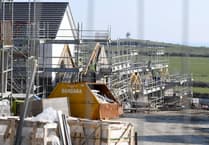There’s no point in reserving land for housing for when the island’s population reaches 89,000 - when there’s no certainty that target will ever be reached.
The author of the Manx Population Atlas says the number of under-65s in the island has ’flatlined’ since the last census.
And Paul Craine believes it would be a mistake to make planning decisions now on unrealistic assumptions to population growth - especially when climate change mitigation could lead to other priorities.
Mr Craine was responding to the report on the Inquiry into the Draft Area Plan for the East.He said the report contains a ’great deal of common sense’ - including the inspector’s concern that government forecasts for the need for more than 2,400 new homes could likely result in a serious over-provision of housing.
Priority
Mr Craine said he also supported the inspector’s position that priority should be given to the development of land allocated for residential development within existing settlement boundaries.
But he said he was ’much less convinced’ about the recommendation that some development sites should be placed in strategic reserve and released for development when the population reaches 89,000.
The most recent Cabinet Office economic and statistical update, for the third quarter of 2019, shows the island population has grown to 84,353, up 479 in a year.
That’s up from the 83,314 recorded in the 2016 Census but still down on the 84,497 from the 2011 Census.
Mr Craine said there has been some evidence of population growth - but it has taken more than three years for the population to rise by 1,000.
’The trend on the graph suggests that the figure of 89,000 may not be reached until after 2030,’ he said.
’By then, with climate change mitigation in full flow to secure a net zero-carbon position by 2050 (or earlier), our planning priorities may look very different.
’We should not be making planning decisions now that may lock us into fixed outcomes more than ten years in the future. ’
Mr Craine said the continuing uncertainties of Brexit make it very difficult to predict future population change in the Isle of Man. Structural changes in Manx economy may also impact on population over the coming years, he said.
’There is no certainty that a population of 89,000 will ever be achieved under existing pressures (pushes and pulls) and policies,’ he said.
Census
’In the three and a half years since the census, the estimated number of people aged under 65 years has risen by just 106. It is flatlining.
’Over the same period the population aged over 65 years has risen by well over 900. Is this the balance of growth that we want?’
Mr Craine said we need much greater clarity, and flexibility, surrounding population policies, expectations, planning and monitoring.
He added: ’Planning does need to be guided by census counts, and estimates, but we need to keep future options open so that we can identify the most appropriate responses in real time.’




